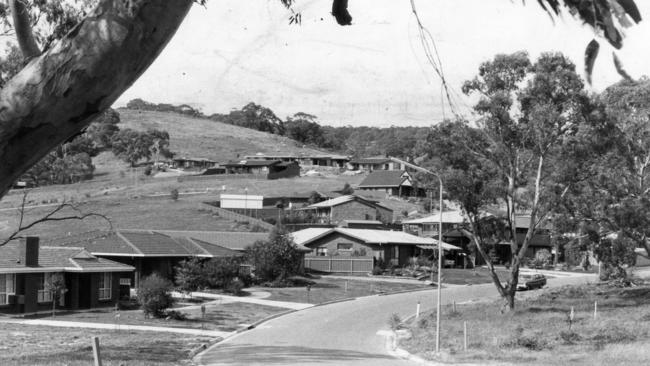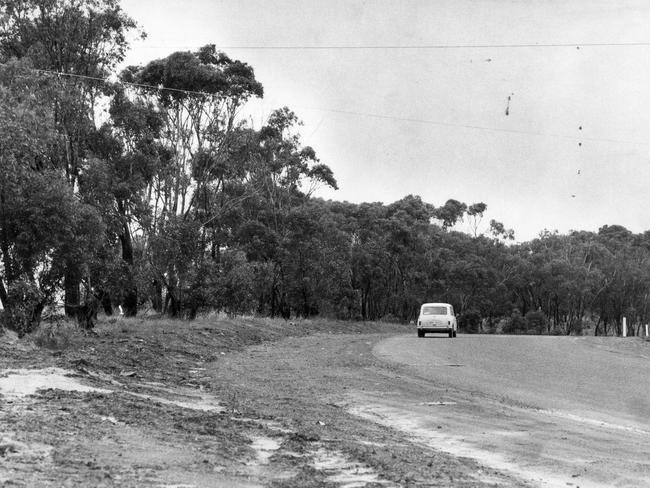The evolution of Adelaide’s southern suburbs
Back in the 1970s, the southern suburbs were home to many single-storey, brown brick houses on the then-traditional quarter-acre block, empty land to all sides. Oh how that’s changed, writes Shannon Caton.

South
Don't miss out on the headlines from South . Followed categories will be added to My News.
When my parents built their first home on Bellaview Rd, Flagstaff Hill, in late 1972, theirs was one of the few houses on the street.
Photos from back then show their single-storey, brown brick home on the then-traditional quarter-acre block standing alone, empty land to all sides.
Mum and Dad still live in the house of my childhood, now extended and reconfigured to include a second toilet, which would have been REALLY handy when my sister and I were growing up.
My parents recall how my nanna was distressed when they announced they were moving from the western suburbs, where they had both grown up, to the “middle of nowhere”.
Flagstaff Rd, Nanna said, was little more than a goat track.
During the early-to-mid ’70s, houses sprung up around Mum and Dad’s place — although the block behind was stubbornly empty for a number of years, perhaps responsible for the occasional brown snake found in our backyard.
For me, growing up, Flagstaff Hill was typically suburban.
By the time I was at primary school, the street was pretty much filled with houses, although none so close you could hear the next-door neighbours.
Everyone had a big backyard. The family over the road even had an inground pool. (Mum and Dad also installed a pool for us, albeit one of those tiny, round, above-ground numbers with the blue plasticky lining. We thought it was wonderful.)
It was the kind of neighbourhood where everyone knew everyone.
So much so, when I call my dad to ask him to send me some photos of our street back in the day, he’s having coffee with the neighbours of 40-odd years.
For decades, little changed on Bellaview Rd.
And then, everything changed.
Today, it feels like every second one of those 1970s-built homes is being demolished and the land subdivided.

Statistics from Onkaparinga Council back up the change.
Over the past five years, the council has received 71 applications to subdivide land in Flagstaff Hill.
The house over the road from Mum and Dad is now gone, with two new homes in its place. As is the one next door to that. And the one three doors down from them. And the one next to that.
The subdivision trend continues on neighbouring Warri Parri Drive.
When I was growing up, “old Max” lived in the house on the corner.
He used to fuss over his lawn until it was bowling-green perfect. Then let it die off and start all over again.
His house is now gone and another two built in its place (one with fake turf).
Two-storey houses are being built hard up against single-storey properties, so close Dad suggests one homeowner will have to move their TV antennae if they still want to receive a signal.
Trees, many of them planted in the ’70s, are being razed.
One tree took out the powerlines as it came down, Dad capturing the entire catastrophe on his phone.
21a Bellaview Rd is up for sale. At just 386sq m, the land is just over a third the size of Mum and Dad’s sprawling block. A few streets away, on Witton St, a 295sq m block is listed for sale.
On Caroline St, not too far from my old primary school, three houses are being built on what I can only assume was once a single block.
Even the houses built a decade after my parents’ are not safe. A realestate.com.au listing spruiks a 1986-built property on Daveys Rd as having subdivision potential.
The “new” part of Flagstaff Hill, as us original residents still think of the area in an around Craigburn, seems immune from the carve up — although history suggests its time will come.
Mum and Dad are philosophical about the changes — so much so that they and their neighbours have even contemplated the subdivision move (I’ll believe it when I see it).
And while I know it’s becoming the norm across Adelaide, including in my own suburb, I can’t help but feel a bit sad whenever I drive along Bellaview Rd and discover yet another one of the houses from my childhood fallen to the bulldozers.
Shannon Caton is head of production at Messenger News. She does not cope well with change.



